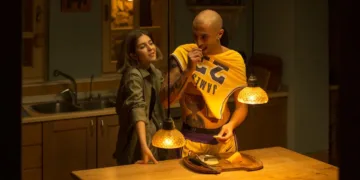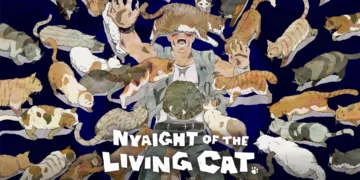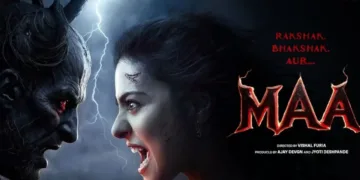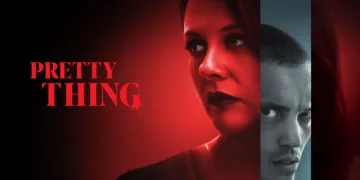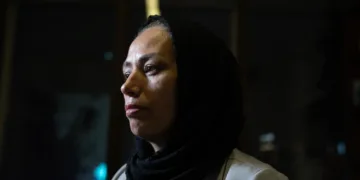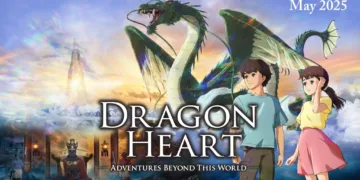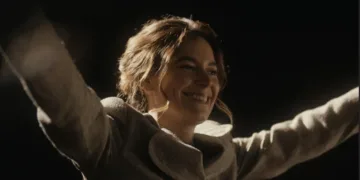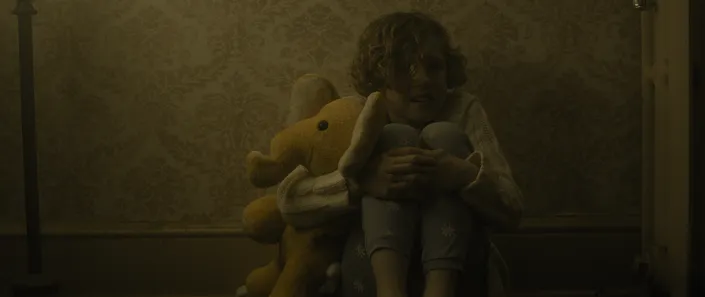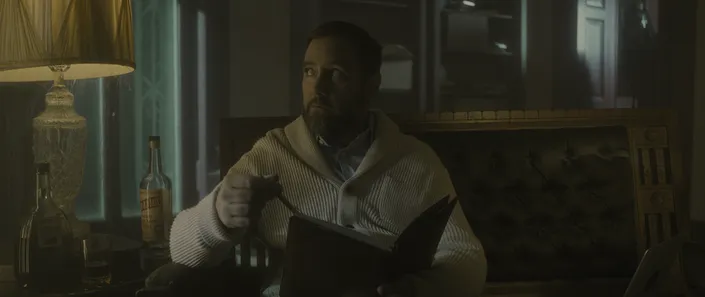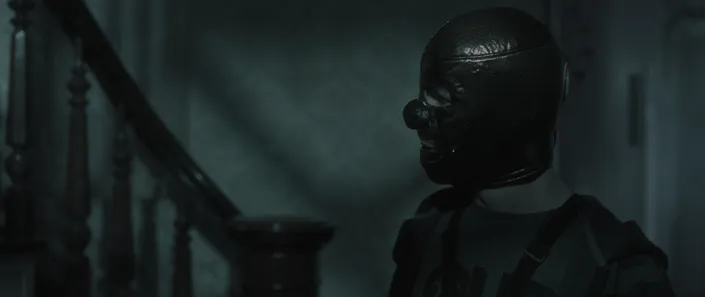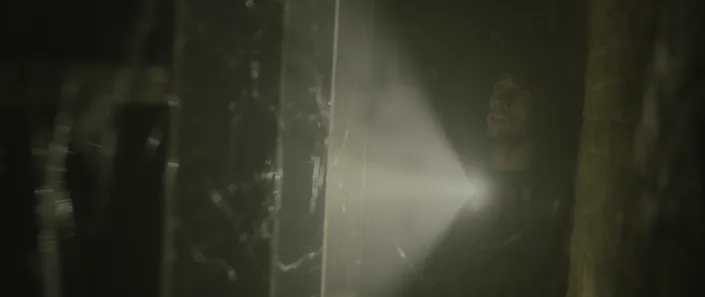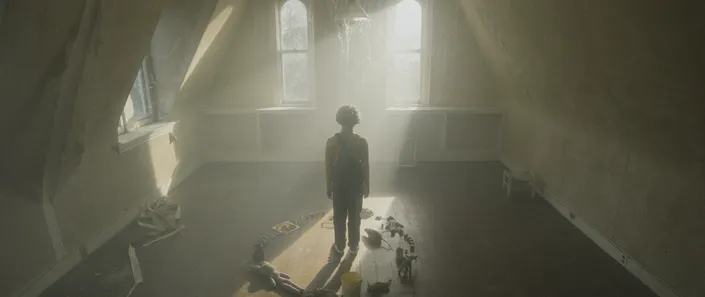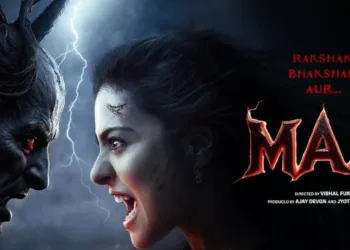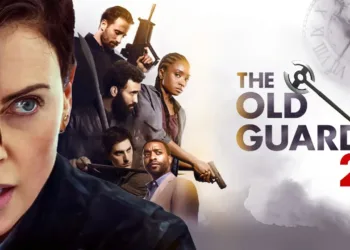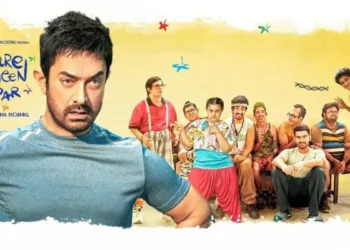With its clever fusion of digital culture themes and the age-old haunted house trope, Ghost Game is a provocative addition to the modern horror environment. This film, directed by Jill Gevargizian, known for her earlier work on The Stylist, features a script by Adam Cesare that grapples with the anxieties of a generation whose identities are becoming increasingly shaped by their online identities.
The narrative invites viewers to investigate the horrors that lurk within its walls and the moral ambiguities of its characters—young adults driven by a desire for internet fame—set against the backdrop of a sinister house steeped in tragedy.
Ghost Game was released in theaters on October 18, 2024, and was soon available on Video On Demand. It describes a time when social media problems were common, and the allure of fame online was unsettling. A film reflecting a society struggling with the consequences of its digital obsessions speaks to the current culture moment.
Ghost GameThe way Gevargizian tells stories is both creative and thoughtful, pushing the limits of conventional horror stories while still using well-known tropes. The film here turns into a reflection on the darker aspects of our connected lives rather than just a vehicle for scares.
Setting the Scene: A Contemporary Haunting Unfolds
In Ghost Game, we meet Laura (Kia Dorsey) and her boyfriend Vin (Zaen Haidar). They are two unhappy young adults whose lives are taken over by the allure of internet fame. Their motivations are as complicated as they are relatable; Laura is motivated by a desire to escape her boring life, and Vin is drawn into her world of risky thrills despite her resistance.
This dynamic establishes the stage for a narrative grappling with the moral limits of online challenges, a theme extremely relevant in today’s digital age. Their “ghost game” involves sneaking into strangers’ homes, putting on masks, and shooting their tricks, all while pretending to be having fun. Don’t steal, don’t get caught, and always have a plan.
As the story goes on, we learn more about the scary Halton House, a run-down mansion with a terrible past that includes a tragic murder-suicide. This setting acts as both a backdrop and a character in and of itself, embodying the fears and anxieties throughout the film. When Laura and Vin break into the house, it sets off a chain of events that quickly hide their true plans as supernatural events unfold.
The tension-filled narrative that explores the intersection of horror and moral decay develops from their initial actions—setting up cameras and exploring the creepy surroundings. Ghost Game is an interesting look at genre and generational worry because it combines traditional horror themes with criticisms of modern society.
Character Development: Complex Motives in a Haunting Narrative
At the center of Ghost Game is Laura (Kia Dorsey), a character embodying the restless spirit of a generation looking for recognition in an increasingly digital world. Laura is not just a thrill-seeker; she is also a young woman dealing with disappointment and the everyday things that happen in her life. Her motivations are multifaceted.
Her obsession with the “ghost game” is a desire to escape and remake herself through the lens of social media fame. Her actions frequently cross the lines between right and wrong due to her relentless pursuit of online notoriety. We get a strong sense of a person who thinks playing dangerous games will give her the escape she needs as we learn more about her character.
Vin (Zaen Haidar), Laura’s boyfriend, gives a different point of view. At first, he doesn’t believe Laura’s risky plans, but he eventually gets caught up in her world, embodying the unwilling participant in her quest for excitement. Vin’s character arc is marked by his slow shift from fear to complicity and finally to a sense of moral awakening. As supernatural events worsen, Vin is forced to confront the consequences of his actions, making him a relatable character for audiences who may question their moral choices in the age of social media.
The supporting characters give the story more depth. Meg (Emily Bennett) and her neurodiverse daughter Sam (Vienna Maas), who live in Halton House, give the film an emotional heart. Meg is shown to be a stressed-out but loving mom who is dealing with her problems while trying to give her daughter a safe home life. On the other hand, Sam stands out as a bright spot of goodness in the chaos. People don’t just see her character as a plot device; they see her as a critical lens through which to see the horror unfold. Sam’s sensitivity to the supernatural elements serves as a warning of what’s at stake, forcing viewers to consider the implications of the intruders’ actions.
Together, these characters weave a complex web of character motivations and conflicts, reflecting societal anxieties. Ghost Game goes beyond conventional horror tropes through their interactions and growth, offering a complex look at morality and consequences in a world where digital facades rule.
Themes and Social Commentary: Navigating the Dark Corners of Digital Culture
The implications of digital culture, particularly the allure and risks of internet fame, are expertly explored in Ghost Game. The film captures the zeitgeist of a generation struggling with the desire for recognition at any cost in an age where social media challenges can quickly turn into real-life consequences.
Laura and her gaming friends are perfect examples of this obsession because they play a risky game that breaks personal space rules in the pursuit of quick online approval. Their motivations reflect a larger cultural trend in which the quest for “likes” and followers frequently precedes moral considerations.
The moral ambiguity of the characters complicates this narrative. Laura blurs the lines between victim and villain in her desperation for recognition and excitement, forcing viewers to confront their complicity in the culture of invasion and voyeurism that the internet promotes. This duality makes audiences wonder if they can relate to characters engaging in such questionable behavior. The film is like a mirror in many ways, reflecting the worst parts of people when they are alone in the digital world.
The consequences of these characters’ decisions get worse as the story unfolds. The film doesn’t sugarcoat the consequences of their careless actions, showing how their actions have effects beyond their immediate experience. As a metaphor for the ghosts of their choices, the haunting presence in Halton House serves as a reminder that actions made in pursuit of fame can cause harm that can’t be fixed.
In today’s world, where social media often puts show over truth, this powerful commentary hits home. Ghost Game is a warning story that makes people reflect on the cost of their digital lives. It cleverly weaves together personal tales with bigger societal problems, making it more than just a horror film. It’s also a thought-provoking look at the moral landscapes we navigate in our quest for recognition and connection.
Cinematography and Visual Style: Crafting Atmosphere in Ghost Game
The way things are put together visually is a big part of what makes Ghost Game such a creepy film. A muted color scheme adds to the sense of decay and foreboding, and the aesthetic choices reflect a gritty reality that is improved.
The lighting, often dim and shadowy, shows how morally unclear the characters are and how unsettling Halton House is. This intentional use of chiaroscuro not only enhances the tension but also immerses the viewer in a world where danger lurks around every corner, evoking classic horror films while keeping a contemporary edge.
The haunted house setting is cleverly used; it goes from being a simple backdrop to a living thing that brings out the supernatural and psychological parts of the narrative. The small, crowded rooms give off a claustrophobic atmosphere, forcing the characters and viewers to confront the horrors that unfolded inside. The filmmakers use the house’s history to their advantage by letting the decorations and architecture reflect its sad past, making the story more interesting to the viewer.
However, there are times when the technical execution of the film falls short, even though it excels at creating an atmosphere of tension. Some shots could use more clarity because the dim lighting can hide important details, leading viewers to miss important story points. Notably, scenes that are supposed to be suspenseful sometimes don’t work because the camera work is too shaky, taking away from the effect that was meant. Even with these problems, Ghost Game still makes us feel something, reminding us of how important visual storytelling is in horror movies. While not perfect, the film’s aesthetic choices add to a haunting and thought-provoking experience, paying homage to the creative spirit of independent filmmaking that tries to break genre rules.
Performance Analysis: Depth and Dynamics in Ghost Game
Kia Dorsey portrays Laura in a way that captivates audiences and gives the character real depth. Laura’s character is a mix of desperation and charm that drives her reckless pursuit of internet fame, and her performance captures both sides of that character. Dorsey does a great job of showing Laura’s feelings, showing her underlying insecurity and drive in a way that is both relatable and annoying. This nuanced performance elevates the film by letting viewers relate to her inner struggles as she struggles with her morally questionable decisions.
On the other hand, Zaen Haidar as Vin is the right balance for Laura’s intensity. His performance is marked by a subtle vulnerability that shows the character’s unwillingness to accept Laura’s dangerous world. Vin’s slow transition from doubt to complicity creates an interesting dynamic tension that makes you think. By showing how a man torn between love and morality feels on the inside, Haidar makes the character’s journey feel real and grounded.
The supporting cast adds significant narrative depth. The film’s emotional core is anchored by Emily Bennett’s true performance as the stressed-out mother, Meg. She shows the character’s weakness and strength, making her relatable in the chaos. Michael C. Williams, who plays Pete, gives the part a lot of depth and shows a guy struggling with his mistakes. Together, the performances in Ghost Game create a rich tapestry that enhances the film’s exploration of human flaws and social anxieties, creating a lasting cinematic experience.
Conclusion: A Haunting Reflection on Modern Anxieties
With its skillful fusion of modern societal anxieties with classic horror elements, Ghost Game emerges as a compelling study of digital culture. The film makes us think about our morals in a world where everyone is so focused on getting approval online through its complicated characters, especially Laura and Vin.
While the performances authenticate the narrative, the cinematography, and visual style heighten the unsettling atmosphere. Ghost Game is an intersection of independent and mainstream filmmaking, challenging established genre tropes while serving as a cultural artifact and reflecting the darker sides of our digital lives. It’s an interesting addition to the horror genre that stays with you long after the movie ends.
The Review
Ghost Game
Ghost Game is a scary film that makes you think. It cleverly combines the anxieties of digital culture with an exciting horror narrative. The complicated characters, especially Laura and Vin, are well-developed and relatable, and the cinematography successfully enhances Halton House's creepy atmosphere. Despite some minor technical issues, the film does a good job of offering a new viewpoint on morality in the age of social media. It is a notable addition to modern horror because it combines psychological depth and supernatural drama.
PROS
- Well-developed protagonists that reflect modern anxieties.
- Effective use of lighting and setting to create tension
- Engages with themes of digital culture and morality.
- Notable acting that enhances emotional depth.
CONS
- Some scenes suffer from unclear visuals due to dim lighting.
- Certain plot points may feel rushed or underdeveloped.
- Familiar horror tropes may detract for seasoned genre fans.





















